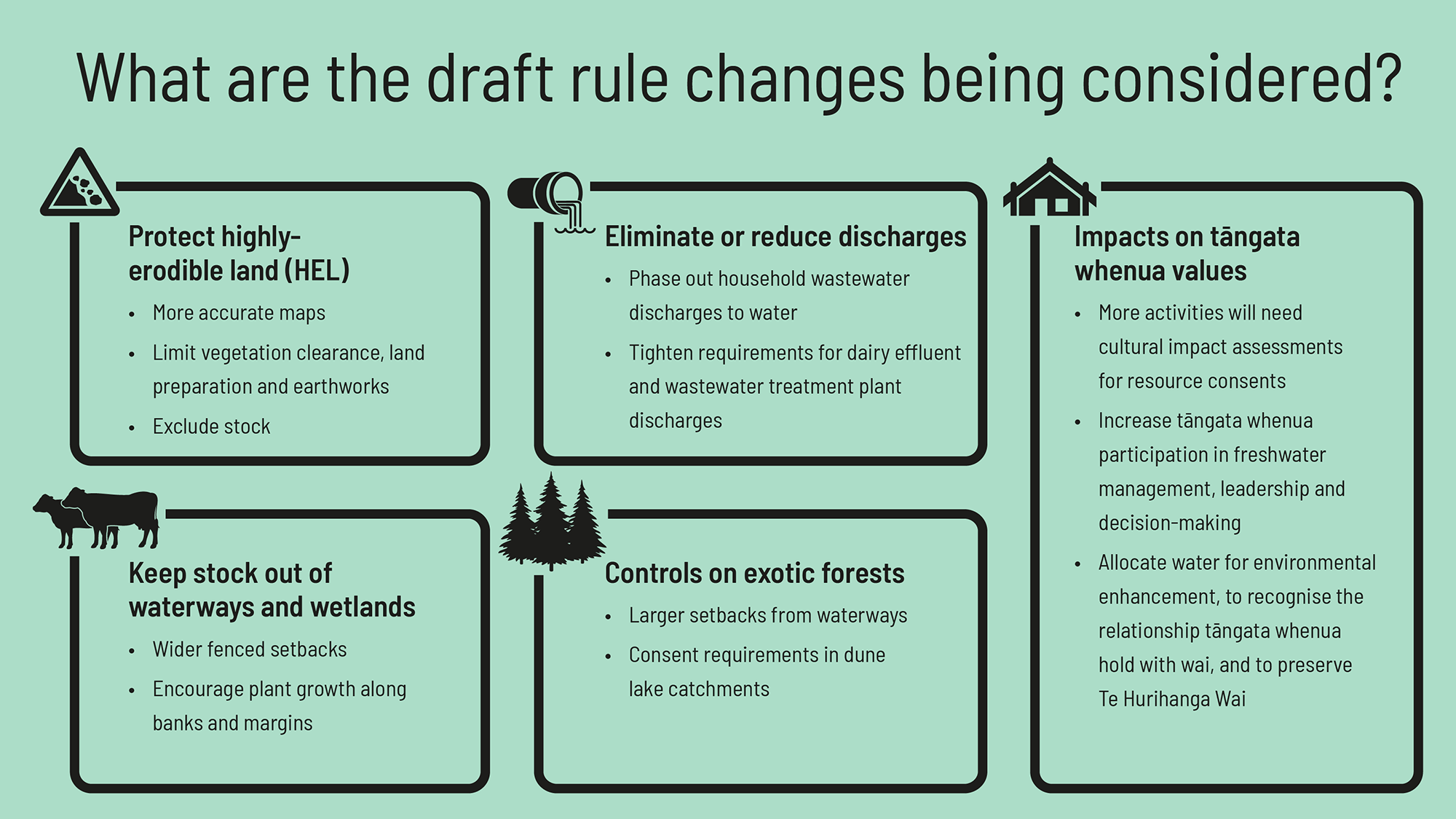Key draft rule changes and actions
Ngā panonitanga ture hukihuki matua
Big changes are needed to significantly improve the health of freshwater in our region. Here’s a quick summary of some of the key draft rule changes we’re considering as part of our Freshwater Plan Change.

Summary of some of the key draft rule changes we’re considering as part of our Freshwater Plan Change.
You can find out more detail about the rule changes that were consulted on as part of the Draft Freshwater Plan Change.
An Action Plan will sit alongside the Freshwater Plan Change. The Action Plan sets out what Northland Regional Council could do to support efforts to improve freshwater. As part of the draft freshwater plan change we consulted on seven new actions we could do to add to the existing actions council is taking. The draft new actions are:
- funding to support stock exclusion, riparian planting, and restoring wetlands;
- increased compliance;
- supporting tāngata whenua involvement in freshwater management and decision-making;
- better monitoring;
- advocacy;
- subsiding resource consent applications; and
- reducing rates for rural landowners.
You can find out more detail about the actions being considered in the draft Action Plan.
